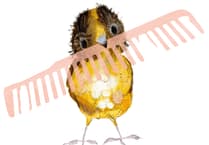Heathlands are important places for nature but globally-scarce places – something it’s easy to overlook, given we have so much heathland in our area.
Heathlands are dominated by a certain group of plants, the heathers. These are so familiar we may not give them a second glance. However, you might want to notice them now because we are nearing the end of this year’s heather blooming season!
Daniel Banks of Surrey Wildlife Trust explained why heather is important: “It provides a safe nesting place for three very special heathland bird species – the Dartford Warbler, the Woodlark and the enigmatic European Nightjar. You can also find a range of British reptiles including Adders and Sand Lizards hiding out around the heather. And heathland has many invertebrates too, including many species of beetles and spiders. Heathlands are also great at storing carbon, so could help us battle climate change.”
In the UK, we have three main species of heather growing in the wild: Ling, Bell, and Cross Leaved. Let’s look at the differences between them.
Ling (Calluna vulgaris), also known as Common Heather, is the most prevalent locally and also across most heathland and moorland in the British Isles and across Europe. It flowers during late summer into autumn, when its small bright pink flowers cover heathland with a splash of colour. Daniel explained: “It can live for up to twenty years and is able to flower throughout its long life stages, as long as it has found the right conditions to thrive in. It is an important food source for many species of butterflies and moths including the Emperor Moth.”
Ling is also found in bog vegetation and acidic pine and oak woodland. It is often managed in nature reserves and grouse moors by sheep or cattle grazing, and also by occasional controlled burning.
Bell Heather (Erica cinerea) often the first of our three heathers to flower, from the end of May, onwards into July. Its flowers bell shaped, as the name suggests. “It provides nectar for a range of insects including the rare Silver-studded Blue butterfly,” revealed Daniel. “Bees also love bell heather and the honey that is produced is often dark, fragrant, and extremely popular.”
Cross-leaved Heather (Erica tetralix) flowers appear in summer and autumn. “It is slightly different as it prefers a wetter environment, so is often found in boggier, softer areas,” said Daniel.
“It gets its name from the leaves growing up the stem in whorls of four. One moth species whose larva feed on this plant is the Shoulder-striped Clover, which is a ‘Red Data Book’ species, meaning it is threatened with extinction, being found only on a handful of heathlands.”
Being able to accurately identify these three simple plants will be vital for the Space4Nature project, pioneered by Surrey Wildlife Trust and the University of Surrey. It uses satellite imagery, surveys by volunteers on the ground and Artificial Intelligence to recognise different habitats. Daniel explained: “It will help us identify and categorise more heathland areas and then take steps to protect and connect them. These connections are vital so creatures can move between them.
“Heathlands are not just important due to the diversity of wildlife they attract – they are also great at storing carbon, which in turn could help us battle climate change.
“We therefore need to do more to protect our heaths and help rectify their declining prevalence within our natural world – and helping us map and study them through the Space4Nature project is a excellent way for local people to play a part.”
For details of the Space4Nature project and to register an interest in getting involved, visit surreywildlifetrust.org




